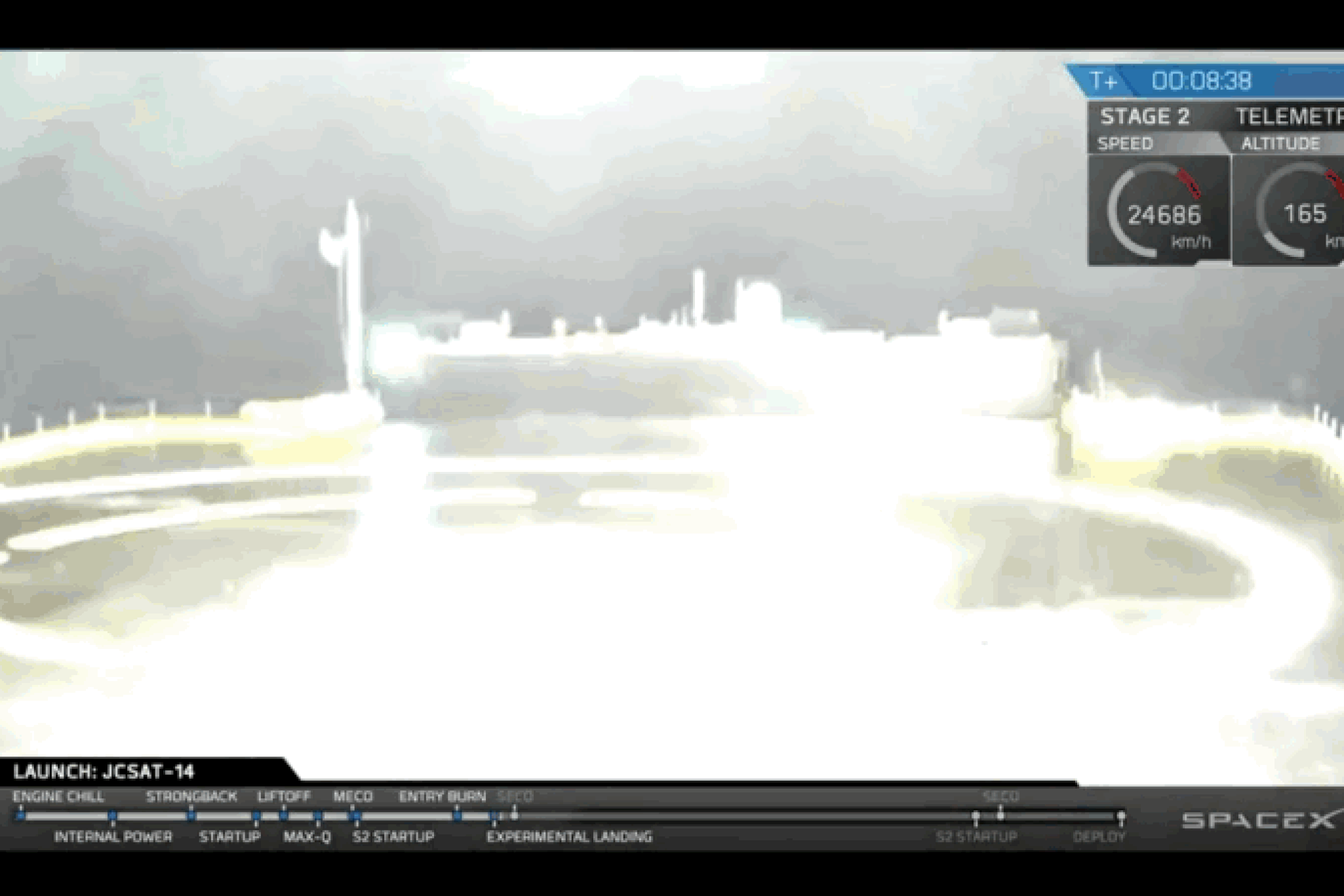SpaceX Falcon 9、再び浮遊するドローン船への着陸成功
SpaceX successfully lands its Falcon 9 rocket on a floating drone ship again
売り上げランキング: 49,505
SpaceX successfully landed its Falcon 9 rocket on a drone ship at sea after launching it into space early Friday morning. It's the third time the company has recovered the vehicle post-launch, and the second time the rocket has landed intact on the ship. Now, SpaceX has both demonstrated that it can land the Falcon 9 at sea, and that the company can repeat the process.
金曜日の早朝、SpaceXはFalcon 9を打ち上げ後、海上のドローン船への着陸を成功させた。 これは3度目のロケットの復帰であり、船への着陸は2度目です。 いま、SpaceXはFalcon 9の海上への着陸が可能であることと、そのプロセスを繰り返せることの両方を示しました。
The logistics for this mission made sticking the landing unlikely, SpaceX said on Monday, but CEO Elon Musk upgraded the chances to "maybe even" just before launch. Today's mission sent a Japanese communications satellite to a very high orbit above Earth — called a geostationary transfer orbit. Because of the satellite's destination, SpaceX originally said that the rocket would be "subject to extreme velocities and re-entry heating, making a successful landing unlikely."
このミッションの進め方は、従来通りの着陸ではないとこだわっていたと、SpaceXは月曜日に言いました。しかし、CEOのイーロンマスクは、打ち上げ前にその機会を「多分」というところまでアップグレードしました。本日のミッションは、日本の通信衛星を、地球の、静止トランスファー軌道と呼ばれる非常に高い軌道まで送りました。 この衛星の行き先によって、SpaceXはもともと、このロケットは「究極の速度と再突入時の加熱という課題が、着陸成功の条件になるだろうと言っていました。
Previously, the company had only been able to recover its Falcon 9 twice post-launch, after making multiple landing attempts over the past year and a half. The first success was in December, when the rocket touched down at a ground-based spaceport in Cape Canaveral, Florida. The second landing occurred in April, but that time the Falcon 9 landed on a floating drone ship in the Atlantic Ocean.Woohoo!! https://t.co/0P8n8VmFbr
— Elon Musk (@elonmusk) 2016年5月6日
A short time after the launch, SpaceX confirmed that not only did its Falcon 9 make a perfect landing, but it deployed its satellite correctly.
打ち上げ後の短い時間で、SpaceXはFalconXが完璧な着陸を行っただけでなく、衛星を正確に(静止軌道へ)投入できたことを確認しました。
The Falcon 9 second stage delivered JCSAT-14 to a Geosynchronous Transfer Orbit pic.twitter.com/GA5x9GMlgW
— SpaceX (@SpaceX) 2016年5月6日
This was SpaceX's fifth attempt to land the rocket at sea, and the company will continue to attempt ocean landings for its next few launches too, according to Hans Koenigsmann, vice president of mission assurance for SpaceX. SpaceX keeps trying to land at sea, because it's sometimes the only option for recovering the vehicle. Missions that launch heavy payloads or go to high orbits use up a lot of fuel during the initial take off, leaving less fuel for the landing. And landing at sea requires a lot less fuel than landing on land (which we explain here).
Perfecting these sea landings is an important step for SpaceX, especially since the company hopes to land and reuse as many Falcon 9 rockets as possible. SpaceX has said that somewhere between half and two-thirds of its launches will need to be at sea, but if it keeps successfully landing rockets, it's going to need somewhere bigger to put them — ironically, its hangar is running out of space.
完璧な海上への着陸は、SpaceXにとって重要なステップです。特に、同社がFalcon 9をできる限り多く着陸させて再利用したいのですから。 SpaceXは、打ち上げの半分から3分の2は海上への着陸が必要だろうといったことがあります。 しかし、ロケットの着陸に成功し続けるのであれば、それらを置くためにどこか大きな場所が必要になるでしょう ― 皮肉なことに、外宇宙に吊るしておくことになるかもしれません。
@elonmusk just re-launch them faster?
— Sam Altman (@sama) 2016年5月6日
原文記事は以下からどうぞ。

